Before we dive into transformation, let’s look at this lesson from history. Why the history lesson in a paper about modern marketing business transformations? Because ...
Those who do not learn history are doomed to repeat it.
George Santayana
In July of 1881, President James Garfield was shot as he walked through a Washington D.C. train station. The Civil War veteran was well-liked by the citizens of the country he had led for just four months prior to this incident. His devoted constituents followed his health obsessively after the assassination attempt, hoping for salvation.
- Newspapers shared details about the innovative young inventor named Alexander Graham Bell who deployed a newly-constructed metal detector to aid in the search for the bullet.
- They marveled at the ingenuity of Naval Engineers who attempted to comfort the president in the blistering heat of summer with another first: a rudimentary air conditioning system.
- They revered the dedication of the president’s doctor and found hope in his reports of the president’s improving condition.
Nonetheless, Garfield died in mid-September, and the country mourned bitterly.
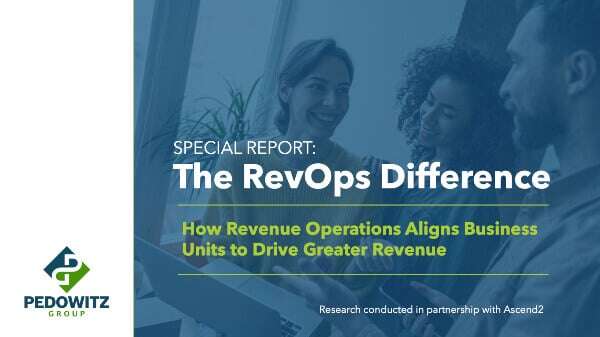
Garfield’s death was less the result of the bullet that punctured his abdomen, and more a failure of the conditions under which he was treated. Modern medicine as we know was still in its formative stage - for instance, doctors were convinced that extracting the bullet was the right method. But they introduced new germs, and their outdated sanitation methods allowed for infection.
In the end, Garfield would've lived if the bullet was left in.
As we'll see later, it’s a good analogy for what many marketers face today, as they watch their own seemingly robust initiatives wither away. Marketing executives invest in a new kind of technology, often considered to be a silver bullet.
However, similar to Garfield’s myopic doctors, Marketing teams miss the big picture or are undercut by an outdated process.
They focus only on the bullet (a new piece of technology or a process implementation) producing minimal, if any results that impact the business... let alone revenue. Before we consider the failures that parallel the death of a president– and the death of the digital marketing shift– let’s consider why this shift continues to happen today.
The Driving Force Is The Customer (Of Course)
Not surprising anyone, customer behavior has driven our necessary transformation.
We, you, and marketers as a whole have known this for over a decade.
In 2009, in the midst of the worst economy in many years, Corporate Executive Board (CEB) set out to understand why some sales reps were successfully selling while others were losing ground and not reaching quotes by miles. In conducting their research, the team found that B2B consumer buying behavior has changed dramatically, and that successful sales people were adapting to this new dynamic of the complex sale.
This meticulous research was published in 2011 in The Challenger Sale, disrupting sales and marketing organizations everywhere as they found that consumers are nearly 60 percent of the way through the buying cycle before ever contacting a vendor or supplier. Since 2011, nearly all of the big analysts firms have conducted their own research to confirm this finding.
As it turns out, in today’s market buyers are at least 60 percent, with some analysts finding the position closer to 90 percent. This was a fundamental and formative shift in buying behavior.
And it's remained permanent.
It is not unreasonable to expect that buyers today have nearly made up their minds before they even talk to us. Typically in the B2B space, it’s buying groups making a purchasing decision instead of a singular decision maker. These groups are often cross-functional (ideally like a center of excellence), all infusing their own perspective into the purchasing decision.
It’s wrong to consider it a conversation. It’s an investigation.
Customers research exhaustively.
And they'll know you before you know them.

What your brand ‘says’ to your buyers before you even know who they are is of paramount importance. Surrendering control (or even participation) in the early buying process still scares some executives, even as the market has dramatically shifted to be far more customer-centric.
An example? The shift towards greater user privacy amidst the use of browser cookies.
Thousands of marketing organizations have changed their customer engagement strategy, looking for ways to re-tip the scales in their favor. Today, the adoption and optimization of new technology, ranging from intent data to conversational marketing (and all built upon CRM, MAP, and data enrichment at minimum) and any number of plug-in technologies give us digital binoculars.
We can watch a consumer’s online behavior, and shape the way they perceive us, evaluate our competitors, and make purchasing decisions. We collect that digital behavior, and make inferences about their likelihood to buy from us, when they might do so and how to present our brand at the right time with the right message.
Insights from our inspection through a metaphorical microscope create a voracious appetite for more. More data. More insights. More tech. More of anything that will put us in front of the investigative consumer earlier, or steer the conversation in our favor. For this, today’s marketer must become more digitally literate. Investments in our people become critical or crippling if we fail to focus on development and mastery of new skills and knowledge.
At the same time, CEOs are demanding that marketing leaders demonstrate how their craft contributes to revenue in a meaningful way. This pressure from the top is forcing CMOs to take a closer look at their strategy, people, processes and operations, engagement strategies, investment in technologies and tactical, operational, and revenue performance metrics.
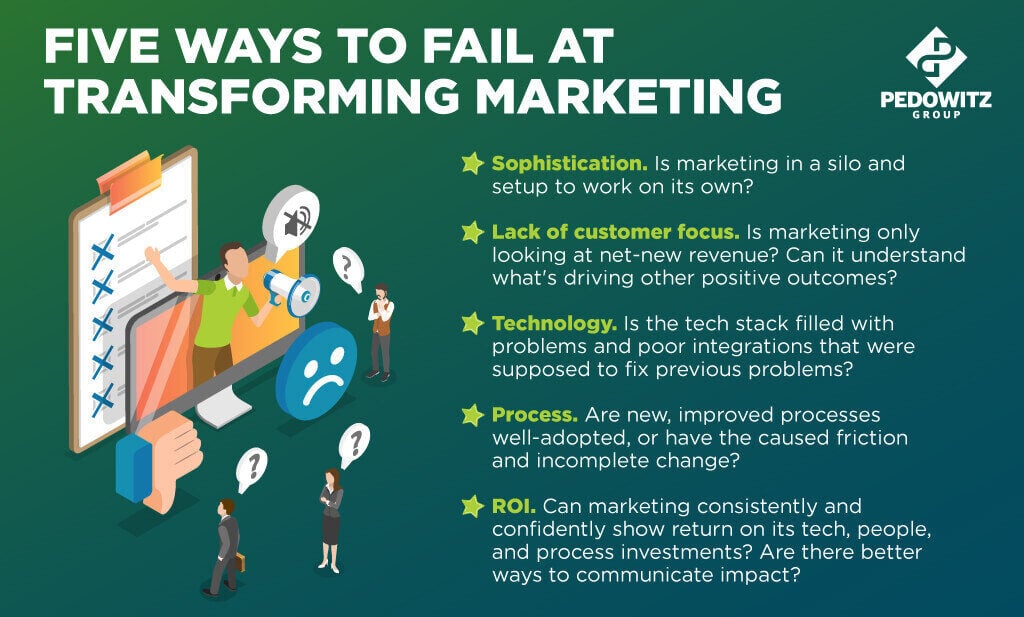
Five Ways To Fail
Just like President Garfield's death, there's a multitude of reasons that contribute to company's marketing failing to truly make an impact. Is your organization guilty of any ... or all ... of these?
Sophistication
Garfield was shot just as modern medicine as we know it today took shape. His doctors weren’t the self-taught barbers and apothecaries of decades prior. But buoyed with a false sense of their own capabilities, their miscalculations were lethal. Old-school doctors implemented an approach to sanitation they deemed “good enough,” and when it failed (because a tool or finger that “looks” clean really isn’t), they wrote off the method.
Likewise for Marketers:
So many companies come to us with a “good enough” marketing strategy, but it rarely accounts for the unseen microorganisms that infect a modern marketing initiative.
Historically, marketing planning centers around budgeting: what tech to invest in, which events are running again, how much money for advertising, how much for slicks and other thought leadership materials, can we open staff positions (and why), and so on. We gnash about over these details, then divvy up our budget accordingly.
But in today’s marketing environment, we need to scrutinize every investment for return. Yes, some channels might be more difficult (or impossible, in the case of #DarkFunnel) to measure, but that doesn't mean measurement is a complete waste of time.
Also: What's the business strategy? How will our company grow in the year ahead? And how do the sales and marketing strategies align to these goals - and revenue numbers?
There's a good reason revenue operations has become popular in the marketing and sales spaces - and that's because RevOps is a sophisticated, multi-function capacity oriented around revenue and the processes that drive it. But it requires the right sophistication to make it hum, or you'll risk running into even more roadblocks than perhaps you already do.
Lack Of Customer Focus
Another potentially lethal germ (metaphorically) is the failure to account for how your customers buy in a different way today than they did even five years ago.
Sure, they're online and doing tons of research before you ever know it. There's communities of people everywhere talking about relevant topics to your business that you simply can't track. And between video, TikTok, etc. there's more content than ever to be consumed.
This is for everyone, by the way - B2B and B2C.
"So, what?" you may ask.

A marketing strategy can't be siloed anymore. In fact, marketing's in a unique position to lead the organizational strategy in more ways than ever before, especially since they're able to contextualize the information from other teams and seek out buyers where they are. This is especially true with the sheer amount of content / information available at a person's fingertips on a daily basis.
This means more strategic partnerships at all levels of the organization. And not just in sales, by the way ... finance, IT, customer support, etc.
Did a lead become a sale? Okay, great ... but did they enjoy the onboarding process? Will they stick around for years and stay loyal, and can you influence that?
Because you must ensure the business (not just a department or two) is truly putting the customer first.
Application of technology
Related: Questions to ask while auditing your tech stack
Alexander Graham Bell promised that his induction-based metal detector would find the bullet. It would have. Later tests proved unequivocally the technology worked.
But reasons for the failure became clear in hindsight: The presiding doctor insisted on scanning the wrong side, while the newly invented metal-coil mattress upon which Garfield lay rendered the technology useless.
For anyone customer-facing, you know about the insane amount of tech available today. In 2022, it's nearly 10,000 per the now-infamous Scott Brinker supergraphic. Every couple of years, the amount of options in the marketplace dramatically increases.
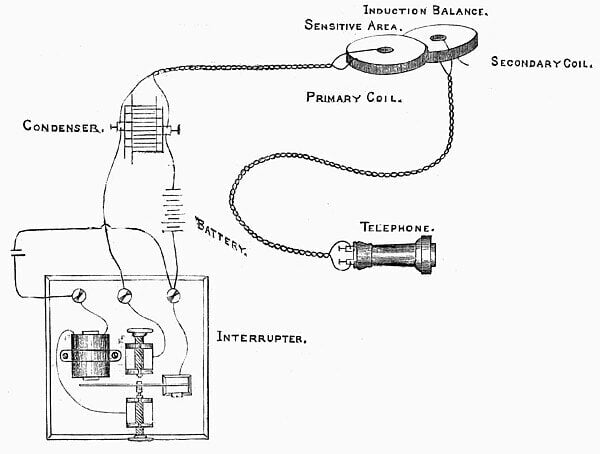
We frequently work with clients who purchase promising technology to solve a problem. (Shameless plug: Our sales and marketing tech consulting services are the trick)
It's just which kind ... what was once CRMs and marketing automation platforms is now intent data, sales enablement, and content experiences. In a few years, who knows?
However, we (still!) often see companies buying these technologies without really knowing what they are buying them for, how they can support their marketing strategy, or even how to use them to get the most out of them.
Further, in many cases implementing the technologies will need to involve IT - you know, that often-underappreciated team who's the backbone of most things that use electricity in your organization? It's still, appallingly, still a new relationship for many marketing teams and therefore, new stakeholders to influence.
So ... the questions still need answers:
What are you going to do with the new technology? How are we going to use it? Who needs to be a part of the decision to buy? How are we going to integrate it with our existing technologies? What skills will we need to run it? What processes need to be created to support them?
(That last question is often overlooked, by the way.)
In most cases, it’s these items orbiting the technology that account for the failure, such as an inability to get the right skillsets developed on the team or an inability to truly build the right integrations to the rest of your stack – and yet technology takes the fall.
Process
For President Garfield, naval engineers created air conditioning and entire new train track was laid for a railcar fitted with a waterbed to reduce the effects of travel– but none of those efforts affected the outcome.
The president’s head doctor refused to be questioned, while the rest of the team bickered over options. The anarchy of his treatment was so extreme that it factored into the trial of Garfield’s assassin, Charles Guiteau, He told the court in his own defense: “The doctors killed him, I just shot him.” (The facts didn’t help Guiteau’s defense. He paid for that shot with a guilty verdict, and his life).
Likewise for Marketers:
Inadequate processes continue to gum up the works of savvy marketers. Inefficient lead management can tank even the best multi-channel campaigns, especially if suddenly sales think they're calling sales-ready leads when really the lead just wanted to read your interesting report (hi, broken lead scoring!).
Suddenly, marketing's ability to impact revenue? Gone.
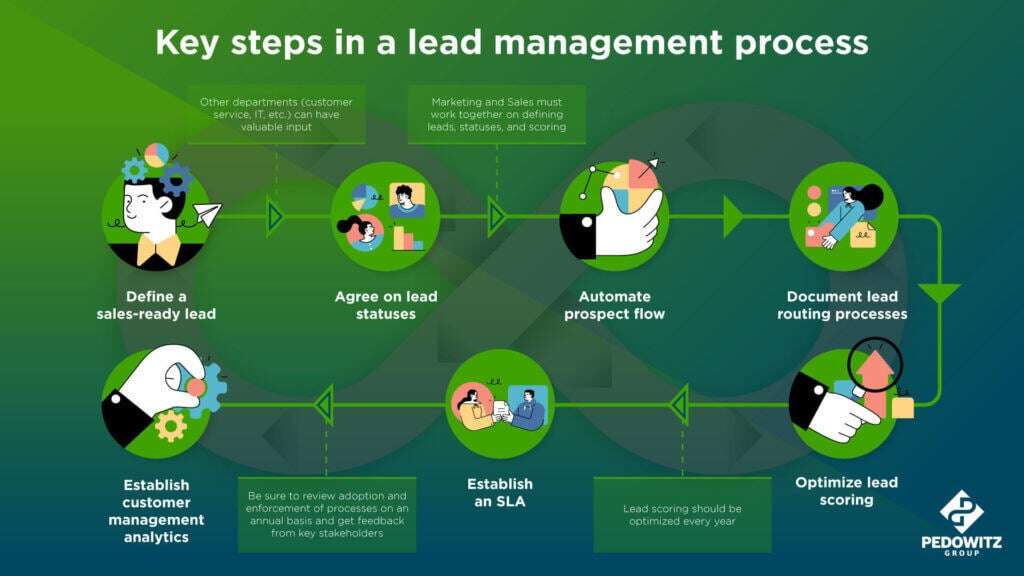
If data isn't flowing properly, you'll have incomplete leads, a database that's irritating to use, and inefficient sales processes that can slow engagement with those leads who are sales-ready.
Bad customer experience for prospects, and annoyed salespeople. What could possibly go wrong?!
And yet ... these are happening with greater and greater frequency, because as teams try to navigate new tech needs, evolving customer demands (and digital behaviors), and blending science and art together to create a worthwhile customer experience, they continue to be hindered by bad internal processes.
Adoption of a technology uproots existing processes, undermines customer engagement strategies, annoys key staff and forces a new strategy. But all too often, plans move ahead with major chunks missing, and these holes become viruses that propagate, spread, and ultimately wound or kill the initial vision.
In the end, Marketing loses credibility.
Again.
Business Outcomes
A missing question: Will a given investment (in training, new headcount, tech, process change, etc.) result in positive return? And how will that be measured?
You'd think this happens often. It doesn't. And it's why, when we work with teams, we walk through value mapping exercises to understand how an engagement will drive towards those business outcomes.
Because any investment you make should align to key business objectives - but too often, we see this neglected, even when enterprises have robust processes to examine each team's business cases for new investment.
That's because there's often a lack of accountability to track down that ROI - or, worse, unrealistic expectations that never could've been met in the first place.
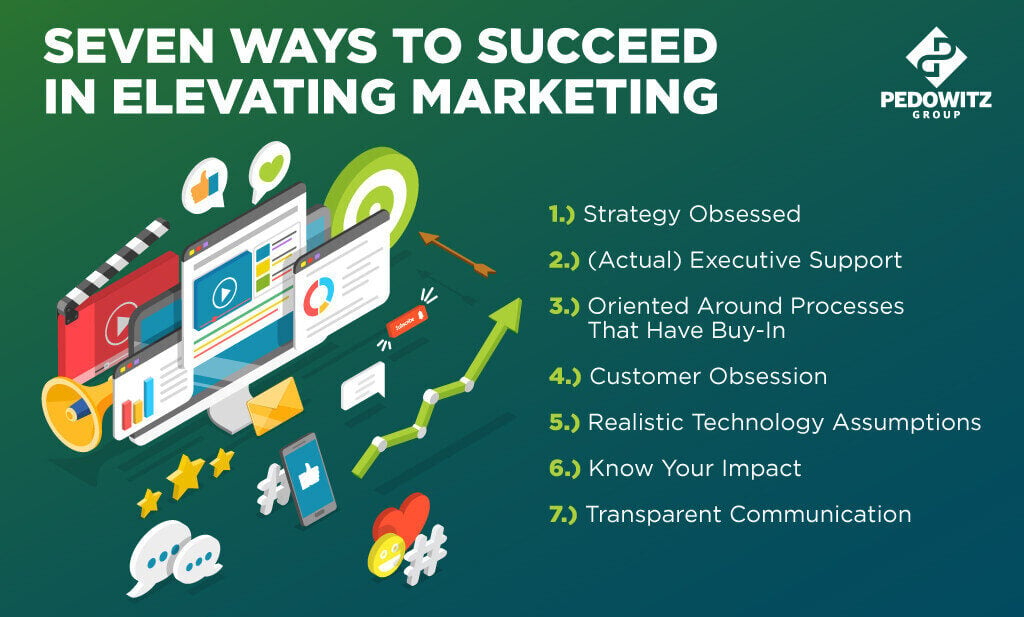
Seven Success Characteristics
If you're looking to transform your organization, then we've found there's a handful of common traits in successful overhauls that generate positive revenue impact.
Obsessed with strategy
Single-minded, unapologetic, and intense. These organizations are preoccupied with strategy, and disciplined enough to drive it at every step of their process.
Staff ... and not just leaders ... ingest a steady diet of top-quality thinking and meaningfully-interpreted data to shape strategy that reflects a sophisticated worldview with depth and comprehensiveness. You can spot these strategy-obsessed teams by the elements they bake into their journeys:
Identify and engage executive stakeholders into a new marketing strategy.
Why does this matter? The essence of change is often a power struggle– the old versus the new, the new versus the ‘other new.’ No longer does this change conveniently contain itself to a single department, it usually encompasses several disparate units. To foster cohesion and accountability, one must start at the top. You need partners to make this happen, to grease the wheels and ensure for example that Sales shares your funnel, and your campaigns integrate with them.
Assess organizational and operational readiness.
When we are hired to help a company transform their sales or marketing function, this is the first thing we want to know about.
Specifically, we ask:
- Is the organization capable of handling change?
- Do they have a demonstrated track record of doing so?
- Is there a business need that everyone is aware of that is necessitating a change in strategy?
- In terms of operational readiness, has a budget been formally allocated?
- Is the technology foundation in place?
- How mature are the processes today and how receptive are people to changing those processes
- Structure follows strategy, so what’s the status on, say, support for marketing and sales alignment with the new strategy?
We might even use a survey tool to get additional insights within the organization and really discover how people feel about key areas that will impact the effort.
Partnerships
While we think of this as driving change within Marketing, new partnerships must be forged across functions– IT, sales, R&D and nearly every other functional area on your org chart. These functions also have to change with Marketing and work at higher levels of collaboration than ever before.
They, too, have to implement new processes, and drive accountability for new behaviors into their organizations. If transformation is designed as something for Marketing only, it will stay and die in Marketing only and fall short of business transformation.
Alignment

Specifically, there’s a strong desire by both Marketing and Sales to have greater alignment to achieve business objectives. One of the things that we often see that slows down transformation more than just about anything else is a lack of alignment between these two groups. Lead management is the easiest example, although there are many areas of alignment to consider.
As we've noted in our steps to successful lead management, sales must come to the table to discuss the definition of a qualified lead. They must agree to lead stages that will be used in CRM. They must agree to hold sales people accountable for using the CRM and accepting leads or sending them back to Marketing in a given timeframe.
In short, they have to agree to be partners, to accept that Marketing really does own that front 70 percent (or more) of the typical buying cycle, and agree to lead hand-offs to ensure timely follow up and commit to doing their part working a well-qualified lead to close.
On the other side, Marketing must agree to find, nurture, and qualify leads that contribute to the sales funnel. Marketing must have shared ownership of revenue goals, and be prepared to reflect the sales strategy in the marketing strategy. If both parties aren’t willing to commit to these things, at a minimum progress will be slow and likely painful.
This is but one example, of course, and it's not only between sales and marketing (even if it's the most common). Partnerships with other teams within the organization are crucial for driving the entirety of the business forward.
(Actual) Executive support
Leaders need to be empowered to drive change in the organization, which means that they will need executive support to hold people accountable for new behaviors.
In addition, leaders do need to know what they have to work with. We have found havoc creating from a lack of clarity around what roles are needed and what responsibilities need to be covered. Once the strategy is clear and executive leadership has determined the course of action, a careful assessment of what skills you have already and what skills you will need is in order. So often, we hear turmoil and even voluntary attrition because people don’t know what is coming and what it means for them.
You can get ahead of that with careful planning and complete transparency in communication as to why, what and how you will make changes to your business.
You will also need to conduct a careful evaluation of which people you will need to execute your vision for the future. Should you find that you do not have the skills in house, a plan to acquire those skills must be accounted for. Staff get very antsy around who is going to to do what in this new environment. It is important to define roles and responsibilities early and communicate that as quickly as possible to team members to diffuse any upheaval.
Process Orientation
Implementing any new strategy and technology inevitably means that new processes have to be created or re-engineered, and people will need to learn them. This will have a ripple effect, sometimes vibrating through organizations at significantly disruptive wavelengths. Planning for this means cross-functional collaboration and education planning, as well as executive agreement to hold people accountable for new behaviors. A few key processes that need to be considered are program planning, lead management and data management.
Something we often see is program management that is not aligned to the business strategy. Program management is the part of sales and marketing alignment that actually executes against the requirement of a joint planning process. You must have a process in place, or develop a process to have Sales and Marketing get together at the beginning of the fiscal year and discuss the sales strategy. Then work together to plan out which programs will be executed by Marketing throughout the year in support of the sales priorities.
The process definition ensures that it happens consistently globally or across P&Ls, etc. In support of those program plans, campaign management process has to be defined and documented. Campaigns can take two weeks to six months to deploy without a clearly defined process for execution. Campaign strategy can be all over the board if a well documented campaign design and development plan is missing.
And more scary: ineffective campaigns will be repeated over and over again if there is not a process for monitoring and either eliminating or optimizing effective or ineffective campaigns.
In our technology-driven world, certain processes can be quite automated (such as lead management), but the right processes and governance over data must be in place to allow this to happen. Otherwise, you're simply setting up more headaches and fires your teams will have to put out - instead of focusing on more revenue-forward initiatives.
Customer Obsession
Depending on your business, Sales can be resistant to actually focusing on the customer. It has never happened, nor will it ever, that we've meet a sales leader or salesperson who says that they are not focused on the customer.
But in reality, most sales people default to hard core selling. In “The Challenger Sale” research, what CEB found was that the most effective sales person (consistently exceeds quotas among other things) was, in fact, the one who challenged customers’ thinking and taught them about an unrecognized problem that they have.
This tough love is the kind of customer focus we are talking about. It is cultural within your organization. Every function, every facet of the business is laser-focused on providing value to the customer. How each group demonstrates that varies, obviously. But this culture is the most likely to succeed in transforming the business of marketing.
Related: Who's involved in knowing your customer? More than you might think
Realistic Technology Assumptions
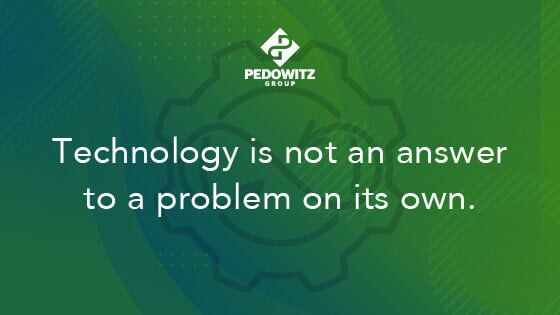
Earlier, we said technology alone isn't a strategy, nor is it a solution. However, it can be a catalyst.
Once you know your "core" tech stack, stay open to new ideas on ways to improve. You may find a new technology that can actually enhance what you do know (and sometimes for less).
And do explore what tech is truly needed - and how it will integrate with current tech - to enable new functionality. For example, if you're looking into account-based marketing initiatives, it'll be far easier to have a strong intent data platform, but that might not be all you're looking for. An upgraded scheduling software, sales outreach tools, and ability to scale 1-to-1 content experiences might also be necessary to truly do it well.
Know your impact
Although it's tough to measure everything, there are some impacts you can measure. For instance, are booked calls from your site increasing - and leading to closed-won deals at a stronger clip than before?
What about content? It's still king, even if there's more of it than ever before. Is yours resonating? What is, and what isn't (and what should you do with content that's not influencing positive outcomes)?
And of course ... is marketing impacting revenue? Without an answer, CMOs risk losing the credibility needed at the executive level, something Dr. Debbie Qaqish digs into in her book From Backroom To Boardroom.

Accountability continues to be underrated, but it truly impacts everything - from sales follow-up to marketing spend. Even though it's harder than ever, thanks to greater user privacy and more channels than ever, there are still ways to measure financial impact - and this will open new doors for long-term success.
What are you trying to accomplish with your business transformation?
We often see three major results areas: Tactical, operational and financial.
Tactical measures are specific to marketing activities that you do to drive leads into the business. Historically, marketing organizations have not been very good at following these leads through your process. We encourage our clients to think of all of these lead sources in the same way you would a personal investment portfolio. Which investments are yielding the greatest return? Which investments do you consider long term investments rather than short term wins?
Operational measures are designed to measure incremental wins to process improvement, marketing efficiencies, and execution of business strategy. Operational measures are the pieces of the transformation that actually drive change. Process reengineering, new knowledge and skills, adoption of new technologies and tools, new organizational structure or a new go to market strategy– all of these things are considered operational changes to Marketing, all of which need to be defined, quantified, and measured.
To ensure adoption into the organization, operational measures must be specific, measurable, achievable, results driven and confined to a specific timeline. Failure to identify operational metrics will inhibit organizational transformation without question.
Transparent Communication
Many clients get excited about the ideas presented here. New tech! Strategies! Change! And of course, revenue impact!
But we've been tuned out when we share a timelessly unsexy truth: The single most critical factor in making a new business initiative successful is communication.
When you reach the point where you are discussing new roles and responsibilities, it is likely that word is out that change is coming. This is disruptive to a culture, but in a good way, not a bad one. In the bad scenario, whispers over cube walls prompt people to panic. The stable ones worry about where they fit, the dynamic ones grow skeptical quickly if the change appears to stall. A spooked workforce is an ineffective one, and eventually it will calcify into a resistance to change of any sort.
Leaders become vocal, efforts are undermined. It’s lethal. Irreversible. Impossible to surmount, and when we encounter it– no brilliant strategy or well-laid plan can break through it.

The antidote is transparency.
Be clear about the strategy, why you are making a change, what has to happen in order to achieve the goals you set forth, and how you plan to move the needle. Be clear about the roles that you will need to support the new efforts and what new responsibilities are going to be required to meet objectives. While this sounds like an odd place to start, remember that change is about people. People change first individually, and then together they become a department changes, and momentum carries that into organizational change. This will not happen overnight, but it’s the good kind of viral sharing that amounts to success.
Also: Remember to share your wins as a team and celebrate. Change is hard, transformation moreso, but in the end it will be worth it!
And if you need a helping hand, we've done this for companies just like yours. See some results now.



